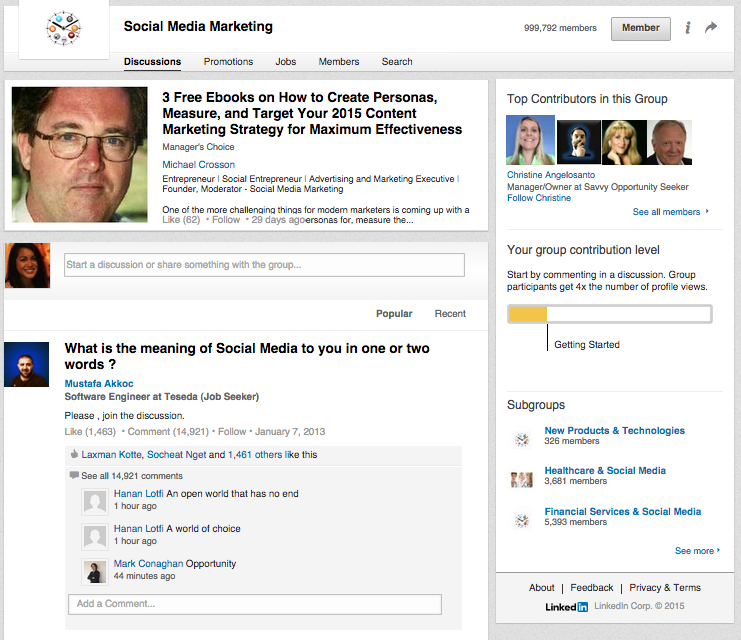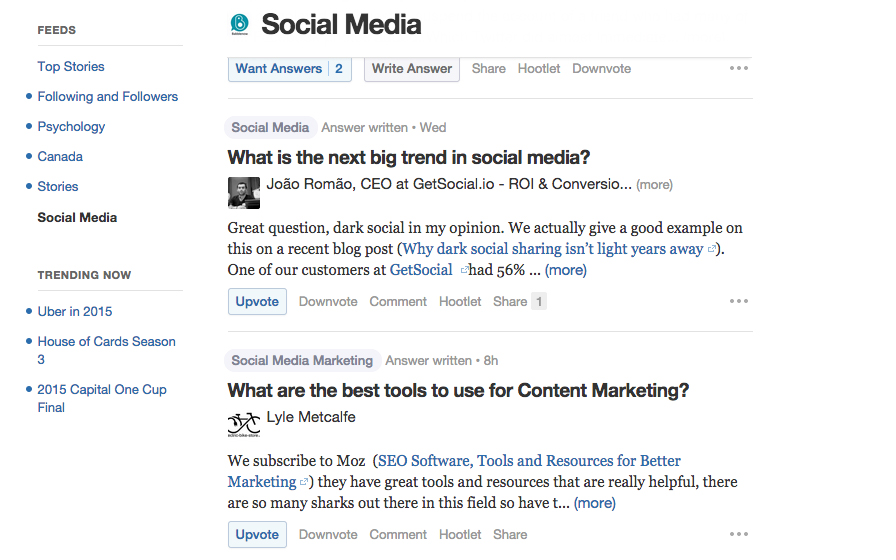Chances are, you’re creating buyer personas for your business even if you’ve never heard the term. It’s all about knowing who your customer is. Whatever product or service your business offers, it solves a problem or addresses a common challenge that exists among a certain group of people: your customers. Once you have a big enough customer base, you create buyer personas in order to market your products even better.
Buyer personas are composite representations of the actual people who make up your business’s clientele. You create them to understand your customers better. Some important things to consider when creating buyer personas are your customer demographics (don’t just blanket-name them ‘Millennials’ though), as well as what drives their purchasing habits. What problems are they trying to solve? What motivates them? What do they do for a living?
You can’t create your buyer personas from inference and intuition. You need data describing your existing customers, which can be collected through surveys, market research, and social media. In this post, we will examine how you can create buyer personas specifically using data from your brand’s social media channels.

Let’s say you opened a bicycle repairs shop because you realized that a) the city is putting in more bike lanes in your neighborhood to encourage cycling, and b) more people might want to take their bikes for maintenance at a place accessible via bike route. Your simplest buyer persona is, therefore, a person who commutes by bicycle often enough to justify regular repairs. Based on the customers that come in to your shop and seek you out online, you can divide up the personas based on levels of sophistication and commuter habits. This helps you order in the right bicycle parts, adjust your pricing levels, advertising, and so on.
The process of making your intuitive persona-making an official step in your marketing plan is simple: pretend for a moment that you’re writing a book about different types of people who benefit from the products and/or services your business offers, and give them names and basic histories. Coming back to the bike repair shop example, let’s say there’s a buyer persona “Olsy” who is a casual cyclist, with little knowledge of bicycle mechanics, and who’s likely to visit the shop for basic tune-up work. Knowing what percentage of your clientele consists of Olsys allows you to create payment plans to match these customers’ unique needs, and market your new products and services for someone with Olsy’s cycling level.
Why are buyer personas important for business?
“That’s all fun,” you might say, “but surely my marketing department has better things to do than creating fictional customers?” In fact, well-researched buyer personas can help marketers bring in and retain more flesh-and-blood customers—and save time on marketing campaigns in the long run. Instead of marketing to a wide unspecified audience, such as teens or stay-at-home parents, you can create buyer personas that accurately reflect facts about your demographic. For example, stay-at-home parents can be a buyer persona who is female, between 29 and 40 years old, novice users, most active online early in the morning.
Staying informed about different types of customers, their interests, and purchasing habits is advantageous for all aspects of your business. Your customer service team can identify the most common pain points among different clients and the most efficient ways to solve them. Content marketers can use buyer personas to tailor topics to each type of customer, which helps bloggers and social media managers create engaging and relevant content. Developers and designers working on the products you offer can glean information about what different customers are trying to accomplish using your product and how to help them reach their goals.
How to use social media to collect data for buyer personas
1. Facebook Insights
One of many advantages of making a Facebook Page for your business is access to Facebook Insights. This analytics tool provides you with different types of data about people who visit your page and click on your Facebook ads—such as gender, age, geographical location, and primary language. You can see the demographics of Facebook users who actively engaged with your Page—liked, clicked, or commented on your posts or ads—as well as users who’ve been “served” your posts, or people outside of your immediate audience who’ve seen the posts either through advertising or on their friends’ Activity list.
Insights data helps you get a better understanding of the audience that interacts with your existing posts, and allows you to adjust your messaging for higher engagement on future posts. Using just the information provided by Facebook analytics, you can create buyer personas based on age group, gender, and location.
If you wanted to get more insights into the habits of your Facebook audience, you can take advantage of a polling app, which you can install on your Page. These polling tools allow you to cut the guesswork out of your online audience’s preferences, and ask them for their opinions directly.

If you have already created buyer personas for your brand, Facebook also allows you to target your ads and sponsored posts by a specific audience. You can take advantage of the same parameters given by Facebook Insights (age, gender, location, language), and tailor your advertising to the persona you’re trying to reach on the network.
2. Twitter Analytics
We have gone over best practices for using Twitter Analytics for business and talked about the importance of the Twitter engagement rate metric in your social media strategy. However, what you may not know is the wealth of information Twitter Analytics shows about your audience. If you navigate to the Followers tab at the top of your Analytics module, you’ll see a detailed breakdown of your follower demographics. Similar to Facebook, Twitter shows you the primary gender, written language, and geographical location of your audience. You can compare data from two networks to see if your audience differs drastically on Twitter and Facebook, and tailor your content accordingly. Who knows—you might even need to create separate buyer personas for the two networks!
Diving deeper, Twitter Analytics also shows you the primary interests of your audience. This is important, because as someone who writes about social media strategy, for example, you’d probably want most of your audience to have interests such as “business and news” or “technology.” However, if a large percentage of your followers is also interested in, say, music, it might be a wise choice to create messaging that would resonate with them.

Another interesting piece of information provided by Twitter Analytics is Device Categories. This graph shows what percentage of your audience is browsing Twitter on an iOS or Android devices, as well as desktop or laptop. This data is especially valuable if you’re interested in e-commerce or wondering whether you should be transitioning to a more mobile-friendly website. Device Categories is a helpful consideration for determining the buying habits of your personas.

In addition to providing information about your Twitter handle’s current followers, you can also look at your organic audience, or Twitter users who don’t follow you but have seen your Tweets on their feeds. Comparing these users with your existing audience can help you find out what kind of messaging might attract new followers. For example, if your organic audience’s interests are generally similar to your current followers, but have one standout hobby not on your followers’ list (for example, they’re more interested in entrepreneurship), you may want to consider expanding your social media content to cover this field. This has the potential to increase your organic reach, and gain more followers.
Once you have approximated a buyer profile based on gender, location, interests and technology habits, you can start crafting messages to fit each persona. Twitter Analytics’ Tweets tab then shows you the performance of these messages.
3. LinkedIn groups
Once you have figured out the basic information about your online audience and drawn initial conclusions about your buyer personas, it’s time to do some field work. We have discussed the benefits of LinkedIn groups for networking as well as content marketing ideas; but these professional groups also very useful for doing buyer persona research.
Let’s say you found out through Twitter Analytics that the top interest for your followers is “business and technology.” You also know that the majority of them work in social media marketing from going through a sample group and reading their Twitter bios. Now, you can visit LinkedIn groups devoted to social media marketing professionals, and get more insight into what topics are currently trending in this community. You can also see examples of different types of content that social media marketers are likely to post and share among themselves, which can help your content marketing team craft their messaging accordingly.
4. Online forums
You may have taken advantage of polls on Facebook, but those are limited to the audiences on the network. If you wanted to conduct a survey of a wider audience, why not use a forum such as reddit or Quora, and get opinions from a more diverse group of users? You can subscribe to subreddits and Quora topics relevant for your industry or an field you’re interested in exploring.
5. Google Hangouts
Social media data for buyer persona research doesn’t have to exclude face-to-face interaction. You can talk to your customers directly (mediated only by a computer screen, that is) and host a Google Hangout to communicate with different focus groups. This is particularly helpful if you’re trying to expand into a different region or have customers in parts of the world where your customer service representatives can’t travel.
Use Google Hangouts to find out common pain points with your products or services, various use cases, as well as verbiage used by your clients when discussing your business—especially if their primary language is different from your own.
6. Google Analytics
While Google Analytics isn’t strictly considered social media, you can definitely use it to track your efforts on different networks, as well as understand your website visitors. Google Analytics gives an overview of demographics, interests, geographical location and technology use of your audience. Additionally, GA data allows you to zero in on specific audiences and target them with your social media ads once you have already created your buyer personas. For example, In-Market audiences can help you find customers who are researching products and actively considering buying a service or product similar to those your business offers.
7. Social media monitoring tools
Keep in mind that best way to create a realistic representation of your client base is to draw information from as many various sources as possible. Each social network on its own not necessarily representative of your entire online audience, which is why it’s important to monitor data from all of them in order to create accurate buyer personas.
Social media monitoring tools like Hootsuite allow you to engage in advanced social media listening for conversations happening around your brand, and collect information from various networks. Hootsuite Analytics can provide data from Twitter, Facebook, LinkedIn, Google Analytics, and Pinterest, as well as any ow.ly shortened URLs you’ve used in your social messaging.


